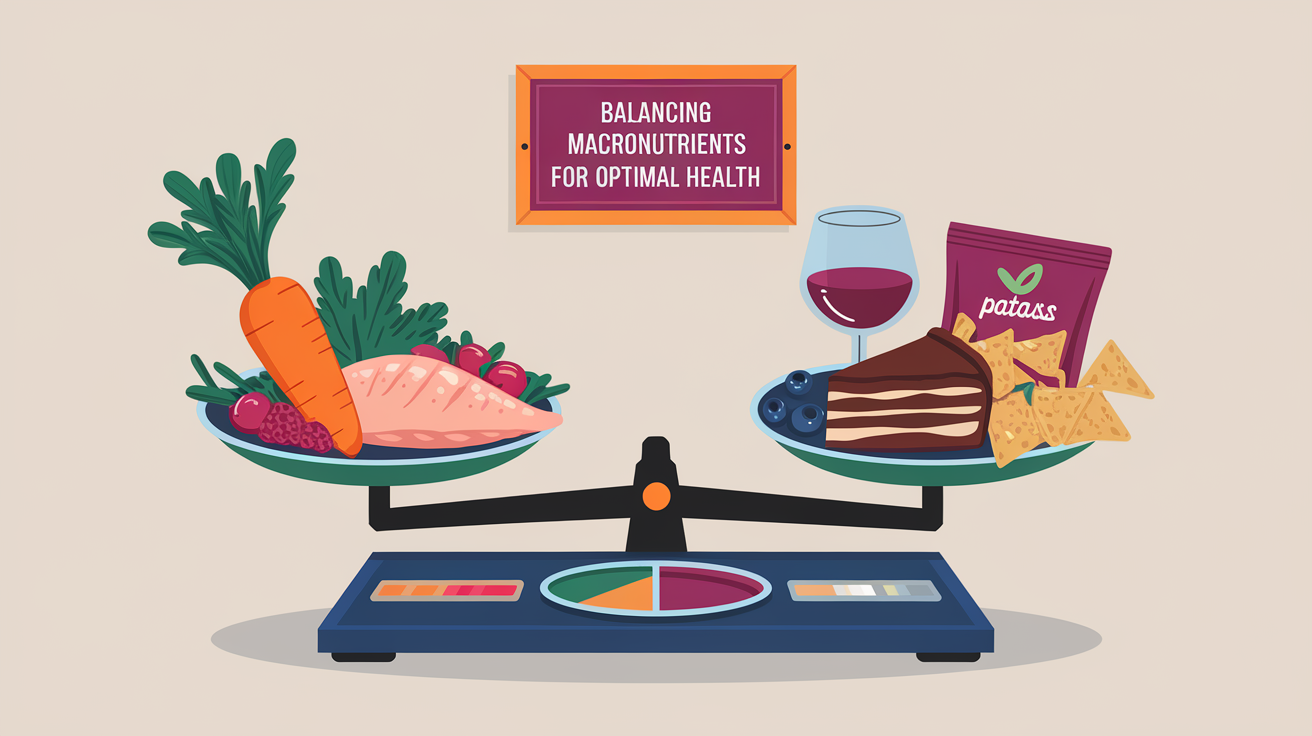Physical Address
304 North Cardinal St.
Dorchester Center, MA 02124

Discover how to balance macronutrients effectively for optimal health . Learn actionable strategies for incorporating proteins, fats, and carbohydrates into your diet to achieve wellness goals.

Balancing macronutrients is a cornerstone of optimal health, especially as we approach 2024. But why is it so important, and how can you effectively balance them in your diet? This article will delve into the essentials of proteins, fats, and carbohydrates, and how to integrate them into your daily meals. Additionally, we’ll provide practical tips tailored to different lifestyles and health objectives, ensuring you can apply these strategies effectively. As someone who’s navigated the complexities of nutrition, I’ll also share personal insights and experiences that will help make this journey relatable and actionable.
In simple terms, macronutrients are the nutrients that provide your body with energy. There are three main types: proteins, fats, and carbohydrates. Each plays a crucial role in maintaining your health and well-being. Understanding these roles is the first step toward achieving a balanced diet.
Proteins are the building blocks of life. They are essential for repairing tissues, making enzymes and hormones, and supporting immune function. Additionally, they can also serve as an energy source when necessary. For instance, when I first started training for a marathon, I realized just how vital protein was for muscle recovery and energy.
Fats often get a bad rap, but they are vital for several bodily functions, including absorbing vitamins, providing energy, and supporting cell growth. Healthy fats, such as those from avocados and nuts, are crucial for brain health and hormone production. I remember incorporating more nuts and seeds into my diet and noticing an improvement in my focus and energy levels.
Carbohydrates are the body’s primary energy source. They are found in foods like fruits, vegetables, and grains. However, it’s important to choose the right types of carbs, as whole grains and fiber-rich foods provide sustained energy and support digestive health. When I switched to whole grains, I experienced fewer energy crashes throughout the day.
Balancing macronutrients isn’t a one-size-fits-all affair. Instead, it requires an understanding of your specific lifestyle and health goals. For instance, athletes might need more carbohydrates for energy, while those looking to lose weight might focus on higher protein intake.
To determine your ideal macronutrient ratio, consider factors such as age, gender, activity level, and health objectives. A common starting point is the 40-30-30 rule: 40% carbohydrates, 30% protein, and 30% fats. However, this can be adjusted based on personal needs. For example, when I was aiming to build muscle, I increased my protein intake to about 35% of my diet.
Numerous apps and tools are available to help track your macronutrient intake. Apps like MyFitnessPal and Cronometer allow you to log your meals and see how they align with your macronutrient goals. These tools can be incredibly helpful in maintaining your dietary balance.
Choosing the right sources for your macronutrients is just as important as balancing them. Let’s explore some healthy options:
To better illustrate how to balance these macronutrients, consider the following meal plan examples:
While balancing macronutrients can significantly improve your health, it’s important to be aware of potential risks. Overconsumption of any macronutrient can lead to health issues. For instance, excessive protein intake can strain the kidneys, while too many fats may lead to weight gain.
Here are some practical tips to help you balance your macronutrients:
Balancing macronutrients is a powerful strategy for achieving optimal health in 2024. By understanding the roles of proteins, fats, and carbohydrates and tailoring your intake to your unique needs, you can enhance your energy levels, support body functions, and improve overall well-being. As we look ahead, remember that the key is personalization and flexibility. Take charge of your health—begin experimenting with your macronutrient balance today!
Are you ready to take control of your nutrition? Start by calculating your macronutrient needs today and explore new recipes that align with your health goals. Interested in trying out some top-rated meal planning tools? Click here to discover more [here] and [here] .